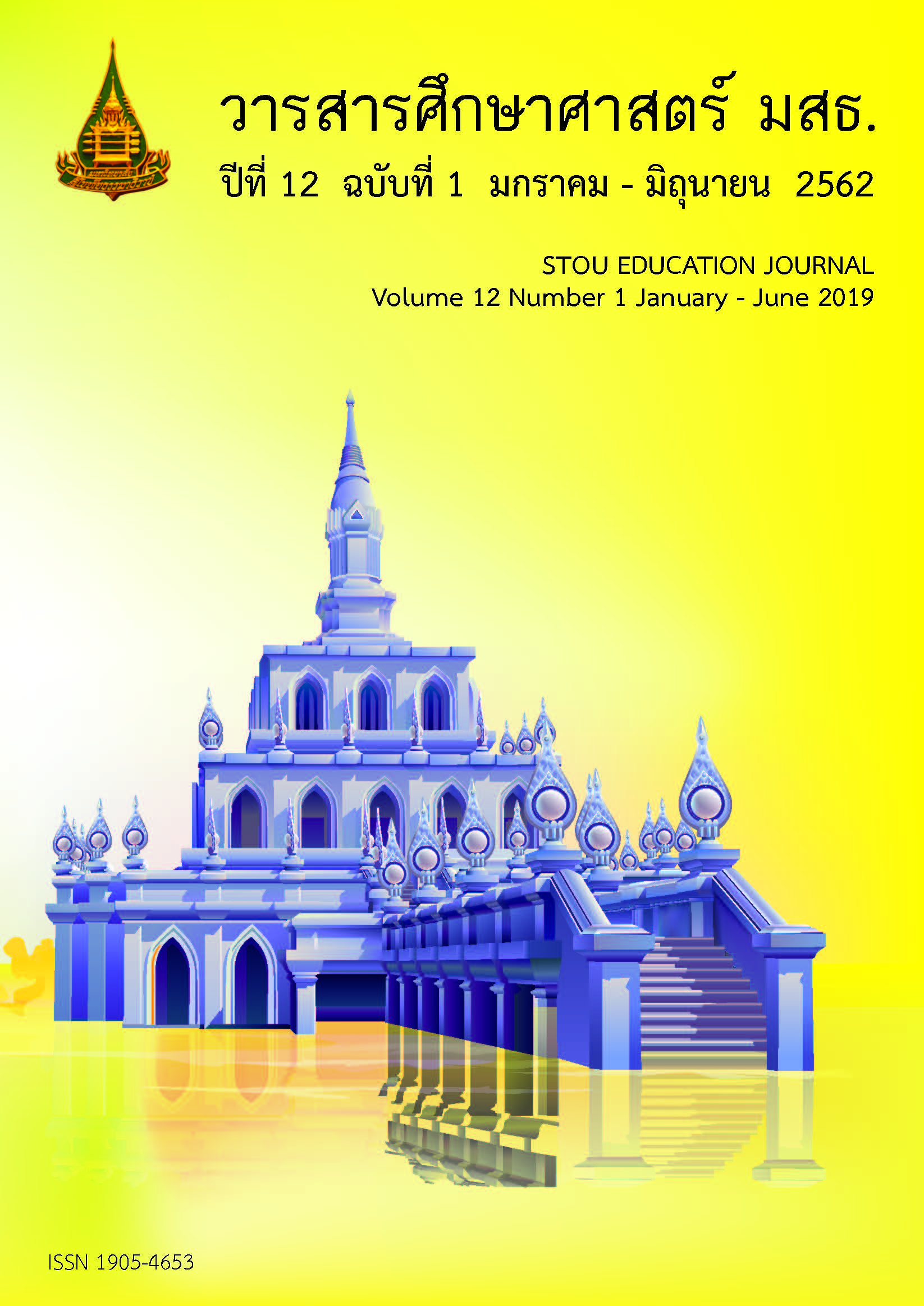Enhancing the Ability in Constructing Scientific Explanations of Learners by Using the Inquiry Teaching Method
Main Article Content
Abstract
This article explains how to develop students’ ability in constructing scientific explanations by using the Inquiry Teaching Method. The writer first reviews problems of science teachers in providing learning management according to the steps of the Inquiry Method from her own experiences, then proposes guidelines to solve the problems by recommending that teachers should understand clearly about the Inquiry Method ; moreover, they should know how to analyze and organize the concepts of a lesson; and understand the 3 components of a scientific explanation: 1) the use of claim; 2) the use of evidence; and 3) reasoning. If teachers apply those guidelines in designing learning management, it will help develop students’ ability in constructing a scientific explanation which is considered an important goal of the Inquiry Teaching Method.
Article Details
References
ภพ เลาหไพบูลย์. (2540). แนวการสอนวิทยาศาสตร์. กรุงเทพมหานคร: ไทยวัฒนาพานิช.
ลือชา ลดาชาติ จักรกฤษณ์ จันทะคุณ รุ่งทิวา กองสอน และวิลาวัลย์ โพธิ์ทอง. (2560). กรณีศึกษาครูวิทยาศาสตร์ที่จัดกิจกรรมการสืบเสาะหลังการอบรมเชิงปฏิบัติการ : ข้อค้นพบจากโครงการคูปองพัฒนา ครู. วารสารศึกษาศาสตร์ มสธ., 10(2) , 89 – 108.
วิจารณ์ พานิช. (2555).วิธีสร้างการเรียนรู้เพื่อศิษย์ในศตวรรษที่ 21.กรุงเทพมหานคร : มูลนิธิสดศรีสฤษดิ์วงศ์.
สันติชัย อนุวรชัย. (2557). การจัดการเรียนรู้วิทยาศาสตร์ด้วยการสร้างคำอธิบายเชิงวิทยาศาสตร์. วารสาร ศึกษาศาสตร์ มสธ., 7(2), 1-14.
สุนีย์ คล้ายนิล ปรีชาญ เดชศรี และอัมพลิกา ประโมจนีย์. (2551). ความรู้และสมรรถนะทางวิทยาศาสตร์ สำหรับโลกวันพรุ่งนี้: รายงานการประเมินผลการเรียนรู้จาก PISA 2006. กรุงเทพมหานคร: เซเว่นพริ้นติ้งกรุ๊ปจำกัด.
สุวัฒน์ นิยมค้า. (2531). ทฤษฎีและทางปฏิบัติในการสอนวิทยาศาสตร์แบบสืบเสาะ (เล่ม 1). กรุงเทพมหานคร: เจเนอรัลบุคส์เซนเตอร์.
Beyer, C. J. and Davis, E. A. (2008). Fostering second graders’ scientific explanations : A beginning elementary teacher’ s knowledge, beliefs, and practice . The Journal of the Learning Sciences, 17(3): 381 – 414.

